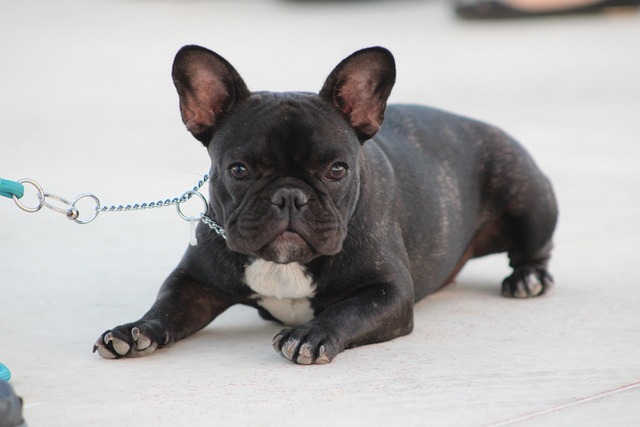
how to train an outside dog
That image of a dog happily guarding a farm may dance in your head, but modern "outside dog" training demands more than a bowl and a doghouse.
Picture this: you’re trying to enjoy a quiet evening at home, but your dog is on high alert, barking at every passing car or distant neighbor. It’s a scene many American pet owners know all too well, and it leads to a common question—what kind of noise will actually stop dogs from barking? Before reaching for a noise to stop dogs from barking, it helps to understand why our furry friends are so vocal in the first place. Dogs bark for all sorts of reasons: boredom, excitement, anxiety, or simply to communicate. Sometimes, the barking is triggered by sounds we barely notice, like a delivery truck rumbling two blocks away. This means that the effectiveness of sounds that calm barking dogs depends heavily on what’s motivating the barking in the first place. A scared dog won’t respond the same way as one who’s just bored, so a one-size-fits-all solution is rarely effective.
Many pet stores and online ads promote noise-based deterrents, with ultrasonic devices and white noise machines being the most popular. The idea behind these is simple: you play a high-pitched sound or steady background noise that supposedly distracts or annoys the dog into silence. But here’s the catch—just because a sound is unpleasant doesn’t mean it’s effective. Scientific studies and countless anecdotes from American dog owners show that some dogs quickly get used to these noises, while others may become even more anxious or confused. In fact, relying on these devices too much can sometimes backfire, especially in apartment buildings where noise can travel and impact neighbors. On top of that, local animal welfare laws in the U.S. emphasize humane treatment, so using aversive tools that cause distress could get you in trouble, both ethically and legally.
What’s surprising is that counterintuitive noises to reduce dog barking work better than most people expect. Instead of harsh or annoying sounds, certain calming frequencies or natural noises have been shown to lower stress and reduce barking. For example, some well-designed studies point to classical music, especially pieces with a slower tempo, as effective dog barking deterrent sounds. Similarly, gentle nature sounds—like rainfall, ocean waves, or birdsong—have a soothing effect on many dogs. This isn’t just anecdotal; researchers at the University of Glasgow found that dogs in shelters barked less when exposed to specific playlists. These scientific sounds to stop dog barking work by creating an environment that feels safe and familiar, which interrupts the cycle of anxiety-driven barking.
To use these sounds effectively at home, it’s important to match the sound with your dog’s unique triggers. Start by observing when and why your dog barks. If it’s when left alone, a playlist of calming classical music or nature sounds can be played softly before you leave. For dogs who bark at outdoor noises, try masking those with a white noise machine set to a gentle rainstorm. The key is to keep the volume low enough that it’s not startling and to avoid sudden changes. Consistency matters—turn on the calming sounds before barking starts, not as a punishment after the fact. This way, your dog learns to associate the noise with calm, not correction. And remember, U.S. animal welfare guidelines strongly discourage any method that causes fear or discomfort, so stay away from anything that makes your dog flinch or hide.
Real-life examples show how these methods work in practice. Take Lucy, a rescue dog living in a bustling Chicago condo. Her owner noticed she barked whenever people passed by in the hallway. After trying—and ditching—ultrasonic gadgets, they switched to playing soft harp music during busy hours. Not only did Lucy bark less, but her overall anxiety seemed to decrease. Research backs this up: a 2017 study published in the journal Physiology & Behavior found that dogs exposed to certain types of music showed lower levels of stress-related behaviors, including excessive barking. The takeaway? Sometimes the most effective dog barking deterrent sounds are the ones that help dogs feel secure, not startled.
No single noise to stop dogs from barking is a magic fix, though. It’s important to look at the bigger picture. Positive reinforcement training—rewarding your dog when they’re quiet or calm—is far more effective than punishment. If you live in an apartment, be mindful of community dog etiquette, like keeping common areas peaceful and never leaving a barking dog unattended. Always clean up after your pet in public spaces, as U.S. laws often impose fines for not doing so. And above all, remember that American culture places a strong emphasis on dogs as family members, deserving of patience and respect. If barking is persistent, consult with a professional trainer who uses science-based, force-free methods. Sometimes, underlying health issues can drive excessive barking, so a vet check is a smart first step. With a little patience and the right approach, you’ll find that creating a quieter home is possible—without ever needing to scare your dog into silence.

That image of a dog happily guarding a farm may dance in your head, but modern "outside dog" training demands more than a bowl and a doghouse.

Dogs rummaging through trash isn’t just messy—it can turn dangerous fast. A single bite of spoiled food might lead to upset stomachs, while wrappers or bones could get stuck in their throats.

Walk into any pet store, and you’ll see aisles of gadgets promising to “fix” your dog’s behavior: prong collars, shock remotes, “training” spray bottles.

What is a reasonable age for a puppy to be potty trained? A first-time dog parent in Philadelphia texted me last week, panicking: “My 14-week-old dachshund still pees on the rug.

Dogs thrive on routine, and that’s especially true when it comes to bathroom habits. Start by taking your puppy or adult dog outside first thing in the morning, right after meals, and before bed—consistency here lays the groundwork.

That sinking feeling hits when you step in a cold puddle on the kitchen floor at 3 AM – or worse, discover a hidden "accident" behind the sofa.